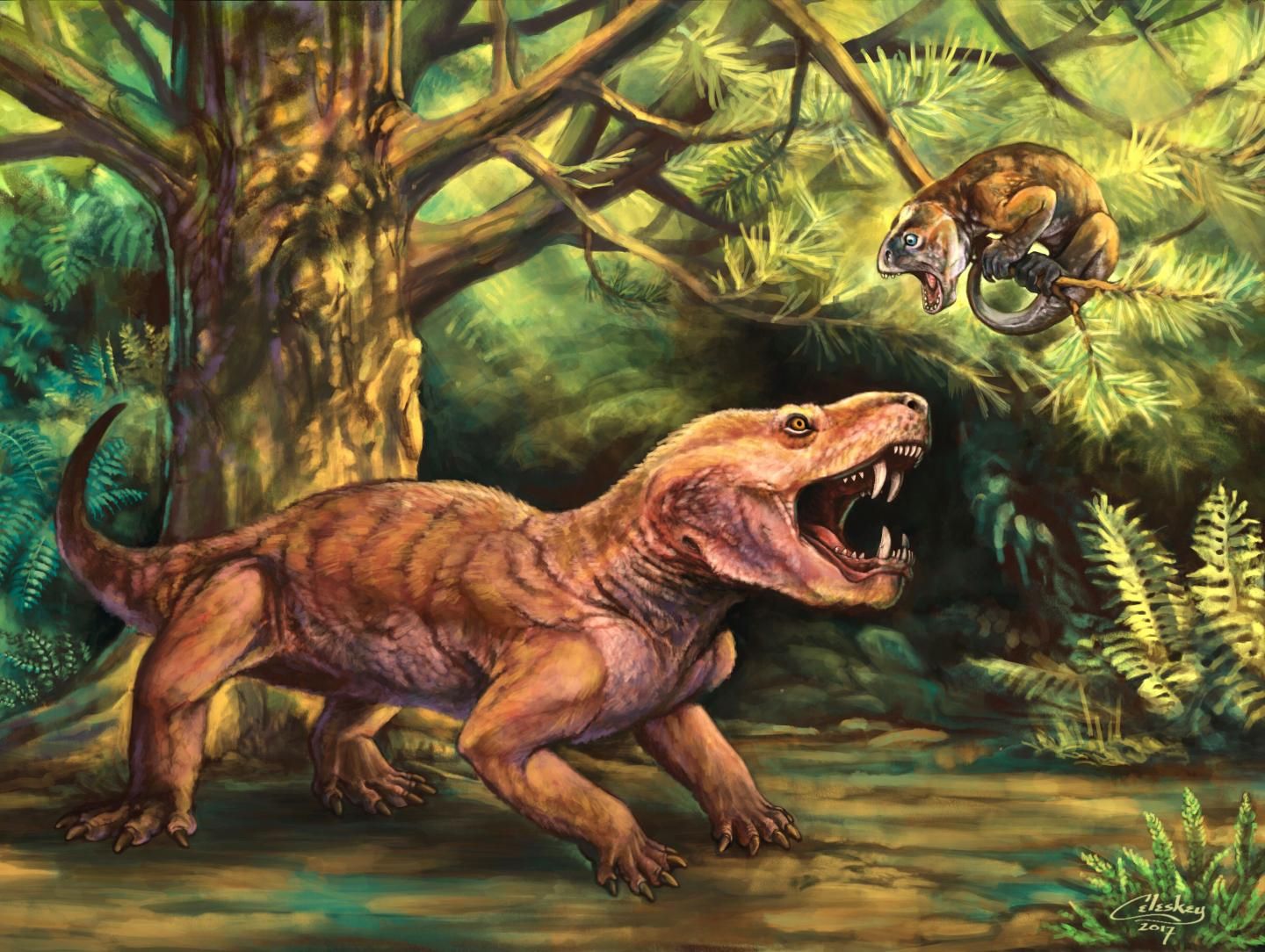
Researchers have discovered the fossils of two new species of saber-toothed prehistoric predators, according to a pair of studies published in the journal PeerJ (available here and here).
The remains were discovered by scientists from the Vyatka Paleontological Museum at a site rich in fossils from the Permian Period (299-252 million years ago) near the town of Kotelnich in European Russia.
The first of the two creatures, Gorynychus masyutinae, was a wolf-sized carnivore which would likely have been the largest predator in its ecosystem. The second, Nochnitsa geminidens, meanwhile, was a smaller, long-snouted carnivore with needle-like teeth.
The species are named after two legendary monsters from Russian folklore: the three-headed dragon Zmey Gorynych and the malevolent nocturnal spirit Nocnitsa.
According to the researchers, the fossils could help to broaden our understanding of an important period in the evolution of mammals. Both finds belong to a diverse group of "proto-mammals" known as therapsids, from which all living mammals are descended. (Gorynychus belongs to a subgroup knownas therocephalia, while Nochnitsa is part of a different subgroup, called gorgonopsia.)
Therapsids—a group comprised of tusked herbivores, burrowing insectivores and saber-toothed predators, like the two new species—roamed the Earth millions of years before the earliest dinosaurs.
To date, the vast majority of Permian therapsids have been found in southern Africa. This makes fossils from this group that are found outside of this region—like the new discoveries—extremely important as they enable scientists to determine whether evolutionary trends in the proto-mammal fossil record occurred globally or merely regionally.
The Gorynychus and Nochnitsa fossils shine a light on a time between two mass extinctions—known as the mid-Permian (260 mya) and end-Permian (252 mya) mass extinctions—when the roles of certain proto-mammal carnivores changed dramatically.
In the mid-Permian, the top predators—like the Gorynychus specimen found at Kotelnich—were therocephalians, whereas gorgonopsians, such as Nochnitsa, were much smaller animals.
But in the late Permian Period, the opposite is true: the top predators were typically large, saber-toothed gorgonopsians, whereas therocephalians tended to be small insectivores.
"In between these extinctions, there was a complete flip-flop in what roles these carnivores were playing in their ecosystems—as if bears suddenly became weasel-sized and weasels became bear-sized in their place," Christian Kammerer, an author of one of the studies, from the North Carolina Museum of Natural Sciences, said in a statement.
Kammerer says that the new species provide the first evidence that there was a global shift in the role of proto-mammal predators after the mid-Permian extinction, and not just a localized effect in southern Africa.
"Kotelnich is one of the most important localities worldwide for finding therapsid fossils—not only because they are amazingly complete and well-preserved there, but also because they provide an all-too-rare window into mammal ancestry in the Northern Hemisphere during the Permian," Kammerer added.
Uncommon Knowledge
Newsweek is committed to challenging conventional wisdom and finding connections in the search for common ground.
Newsweek is committed to challenging conventional wisdom and finding connections in the search for common ground.
About the writer
Aristos is a Newsweek science reporter with the London, U.K., bureau. He reports on science and health topics, including; animal, ... Read more
To read how Newsweek uses AI as a newsroom tool, Click here.








